Introduction to Breast Augmentation
Breast augmentation, also known as augmentation mammoplasty, is a surgical procedure aimed at enhancing the size and shape of a woman’s breasts. It involves the placement of breast implants under the breast tissue or chest muscles to increase breast size, improve symmetry, or restore breast volume that may have been lost due to weight reduction or pregnancy.
Historically, breast augmentation has ranked among the top cosmetic surgeries worldwide, reflecting its popularity and acceptance. This procedure caters to a variety of personal reasons, ranging from aesthetic enhancement to reconstructive needs following mastectomy for breast cancer.
Women considering this procedure often seek to boost their self-confidence and achieve a more proportionate figure. However, it’s not just about cosmetic improvement; for many, it is a deeply personal journey of self-improvement and empowerment.
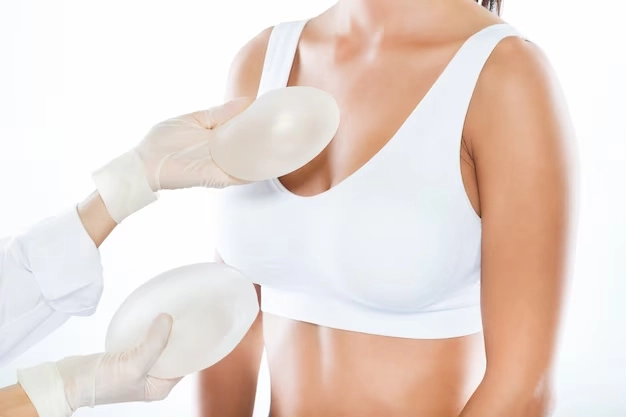
The decision to undergo breast augmentation is significant and requires careful consideration. Potential candidates should have a clear understanding of the reasons behind their choice, the benefits, the risks, and the commitment to post-surgical care.
In the following sections, we will delve into the intricacies of breast anatomy, the various implant options available, the procedural details, and what one can expect during the recovery period. We aim to equip you with the essential knowledge needed to make an informed decision about whether breast augmentation aligns with your personal goals and expectations.
Understanding Breast Anatomy and Aesthetics
Breast Anatomy
Anatomical components such as the chest wall, pectoral muscles, areola, and nipple play a significant role in determining the optimal placement and type of implants used in augmentation.
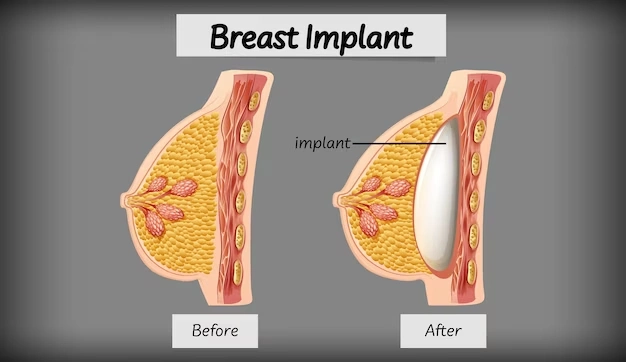
Aesthetics
-
Size : Implant size is chosen based on the patient’s body frame, existing breast tissue, and desired increase in size.
Shape: Breasts can be round, teardrop-shaped, or asymmetrical. Implants can help achieve a more symmetrical and desired shape.
Proportion: The goal is to achieve a breast size in harmony with the patient’s body proportions, enhancing overall appearance.
Symmetry: Most women have some degree of natural asymmetry; breast augmentation can correct this and achieve better balance.
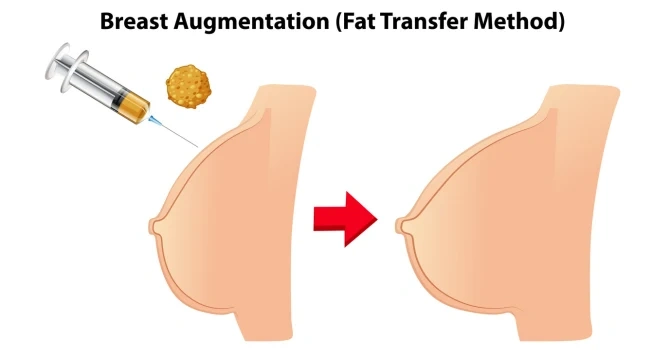
The Role of the Plastic Surgeon
A skilled plastic surgeon uses this anatomical and aesthetic knowledge to guide patients through the decision-making process. They will consider factors such as:
- The patient’s body type and chest dimensions.
- The quality of breast skin and tissue.
- The desired outcome in terms of size, shape, and feel.
- The choice between saline and silicone implants, or alternative options like fat transfer.
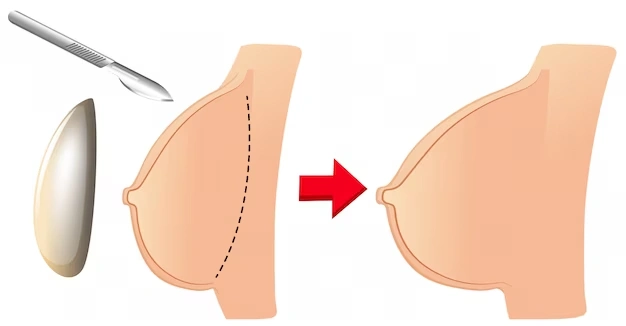
Types of Breast Augmentation Procedures
Implant-Based Augmentation
-
1. Saline Implants
These implants are filled with sterile salt water. They can be filled after placement, which allows for a smaller incision. If a saline implant leaks, the body will absorb the saline and expel it naturally.
-
2. Silicone Implants
Filled with silicone gel, these implants feel more like natural breast tissue. If the implant leaks, the gel may remain within the implant shell or escape into the breast implant pocket.
-
3. Cohesive Gel “Gummy Bear” Implants
These are form-stable implants that maintain their shape even if the implant shell is broken. The consistency of the silicone gel inside these implants is thicker, which makes them firmer
-
4. Autologous Fat Transfer
This involves liposuction to take fat from other parts of your body and injecting it into your breasts. This is a less common method and is usually for those seeking a relatively small increase in breast size.
Incision Types
-
Inframammary Incision: Made under the breast in the crease.
Transaxillary Incision: Made in the armpit.
Periareolar Incision: Made around the nipple.
Transumbilical Incision: Made through the belly button (rarely used).
Placement of Implants
-
Submuscular or Subpectoral Placement: Under the pectoralis major muscle. This may be suitable for women with thin breast tissue.
Subglandular or Submammary Placement: Over the pectoral muscle, directly behind the breast tissue.
Specialized Techniques
-
Revision Breast Augmentation: Performed to correct or improve the results of a previous breast augmentation surgery.
Breast Augmentation with Lift: Combines breast augmentation with a breast lift (mastopexy) to raise and firm the breasts.
-
Choosing the right type of breast augmentation procedure involves a detailed consultation with a plastic surgeon, who will assess the patient’s anatomy, discuss their aesthetic goals, and explain the benefits and risks associated with each type of procedure. The surgeon will recommend the most suitable approach based on the patient's individual needs, ensuring that safety, desired outcomes, and the quality of results are prioritized.
The Consultation Process for Breast Augmentation

-
Initial Discussion
Patient's Aesthetic Goals : The surgeon will inquire about your desired breast size, shape, and overall look you aim to achieve with the augmentation.
Medical History Review : A review of your medical history, including any medical conditions, drug allergies, previous surgeries, and family history of breast cancer. -
Physical Examination
Breast Examination: The surgeon will examine your breasts, taking measurements of their size, shape, nipple placement, and skin quality. This helps in selecting the appropriate implant size and type.
Skin Elasticity Assessment: Essential for determining the best augmentation method, especially if a breast lift might also be necessary. -
Imaging and Sizing
Photographs: For medical records and to assist in planning the surgery.
Sizing Test: Trying on different sizes of implants using a special bra to give an idea of what the outcome might look like.
-
Detailed Information
Procedure Walkthrough: The surgeon will explain the steps of the surgery, from incision to placement and recovery.
Implant Options: Discussion about the types of implants (saline vs. silicone), shapes (round vs. teardrop), and textures (smooth vs. textured).
Risks and Complications: A talk about potential risks, including capsular contracture, implant rupture, and the need for future surgeries. -
Expectation Setting
Visualization: Some surgeons may offer digital imaging to provide a simulation of the potential outcomes.
Realistic Outcomes: Ensuring that the patient has realistic expectations about the results and understands that perfection is unattainable. -
Pre-Operative Planning
Pre-Surgery Instructions: Information on what to do before surgery, such as avoiding certain medications or a baseline
Post-Surgery Expectations: Discussion on recovery time, activity restrictions, and follow-up appointments.
-
Financials and Logistics
Costs: A detailed breakdown of the costs, including the surgeon’s fee, facility fees, anesthesia, implants, and any additional costs.
Financing Options: Information on payment plans or financing if available. -
Q&A Session
Questions and Concerns: The patient can ask any lingering questions they have and discuss any anxieties or concerns about the surgery.
-
Consent
Informed Consent: If the patient decides to proceed, they will be asked to sign consent forms after fully understanding the procedure.
Choosing the Right Implants for Breast Augmentation
-
Implant Material
Saline Implants: Filled with sterile saltwater. They are inserted empty and filled once in place, allowing for smaller incisions and size adjustments.
Silicone Implants: Filled with silicone gel, these implants feel more like natural breast tissue. They are pre-filled and may require a larger incision for placement. -
Implant Shape
Round Implants: Enhance volume and create a fuller appearance at the top of the breasts. They are the most common choice for augmentation.
Teardrop (Anatomical) Implants: Mimic the natural shape of the breast with a sloped contour and more fullness at the bottom. -
Implant Texture
Smooth Implants: Have a softer feel and can move within the implant pocket, giving a more natural movement.
Textured Implants: Develop scar tissue to stick to the implant, making them less likely to move around inside of the breast and become repositioned. -
Implant Profile
Low Profile: Wider and flatter appearance. Suitable for women with wider chests.
Moderate Profile:The most popular choice, offering a natural look.
High Profile:Provide more projection off the chest wall for a more prominent silhouette. Good for narrow chests. -
Implant Size
Volume Measurement: Breast implants are measured in cubic centimeters (cc's), and the desired size is a personal choice that also depends on the patient’s body frame and amount of existing breast tissue.
-
Quality and Safety
FDA Approval: Ensure that the implants chosen are approved by the Food and Drug Administration (FDA) or the respective regulatory body in one's country.
Warranty and Longevity: Consider the manufacturer's warranty and the expected longevity of the implants. -
Personal Preferences and Lifestyle
Body Type and Chest Width: Implants should complement the patient’s natural anatomy.
Lifestyle Considerations: High-impact activities might influence the choice of size and type of implant.
Future Life Changes: Considerations for potential weight fluctuations, pregnancy, or breastfeeding in the future. -
Surgeon’s Recommendation
Expertise: A board-certified plastic surgeon can provide recommendations based on years of performing breast augmentations.
Visual Aids: Sizers and 3D imaging can help in visualizing potential outcomes.
Before and After Gallery: Review the surgeon’s portfolio of previous patients.
Preparing for Breast Augmentation Surgery
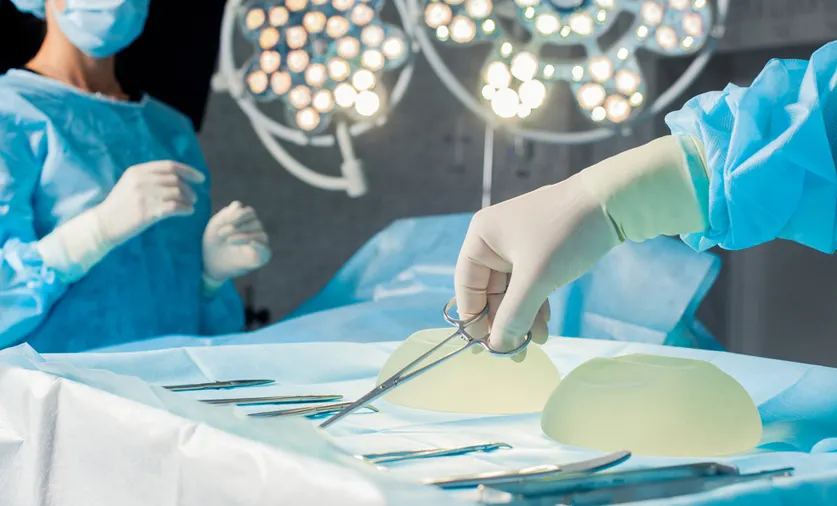
-
Pre-Surgery Consultation
Medical Evaluation: Obtain a full medical evaluation and any necessary blood tests as directed by your surgeon.
Medication Review: Discuss any medications, vitamins, or supplements you're taking. Certain medications may need to be adjusted or stopped before surgery.
Mammogram: Some patients may be advised to get a baseline mammogram before surgery and another one after to detect any future changes in breast tissue. -
Lifestyle Adjustments
Smoking: Smoking can impair healing, so it’s advised to quit at least six weeks before and after surgery.
Alcohol: Avoid alcohol for at least a week prior to surgery as it can increase bleeding risk.
Diet and Hydration: Eat well-balanced meals and stay hydrated in the weeks leading up to surgery.
-
Home Preparation
Recovery Area: Set up a comfortable recovery space at home with pillows, a place to rest, and entertainment options like books or a TV.
Assistance: Arrange for someone to drive you to and from the surgery and to help you at home for at least the first 24-48 hours.
Childcare/Pet Care: If applicable, arrange help for childcare and pet care. -
Practical Arrangements
Time Off Work: Arrange to take the necessary time off work for your recovery, generally 1-2 weeks, depending on your job.
Household Tasks: Complete any significant household tasks ahead of surgery, so you don’t have to worry about them while you recover. -
Day Before Surgery
Confirm Surgery Details: Review the time and location of your surgery and the post-op care instructions.
Last-Minute Preparations: Shower using antibacterial soap, refrain from eating or drinking after midnight, and prepare your bag with essentials for surgery day. -
Surgery Day
Clothing: Wear loose, comfortable clothing that opens in front and slip-on shoes.
Valuables: Leave jewelry and other valuables at home.
Medications: Bring any medications you have been instructed to take on the day of surgery. -
Mental Preparation
Stress Management: Practice relaxation techniques if you feel anxious, such as deep breathing or meditation.
Expectations: Have a clear understanding of the expected outcomes, potential risks, and the recovery
The Breast Augmentation Procedure
-
Pre-Operative Preparations
Anesthesia: The surgery is generally performed under general anesthesia, where you'll be asleep and pain-free.
Marking: Prior to the anesthesia, the surgeon may make markings on your breasts to guide the incision placement. -
Making the Incisions
Incision Sites: The surgeon will make incisions in inconspicuous areas to minimize visible scarring. Common sites include under the breast in the crease (inframammary), around the areola (periareolar), or under the arm (transaxillary).
Choice of Incision: The type of incision is based on your anatomy, the type of implant, surgeon's recommendation, and your preference. -
Inserting and Placing the Implants
Submuscular Placement: The implant is placed under the pectoral muscle, which may offer more natural results and reduce the risk of scar tissue.
Subglandular Placement: The implant is placed behind the breast tissue but over the pectoral muscle. This might be recommended for women with more breast tissue or those seeking a more noticeable 'augmented' look. -
Types of Implants
Silicone Implants: Filled with silicone gel that feels a bit more like natural breast tissue.
Saline Implants: Filled with sterile salt water. They’re filled after they’re placed, allowing for a smaller incision. -
Closing the Incisions
Layers of Suturing: The surgeon will close the incisions with layered sutures in the breast tissue and use sutures, skin adhesive, or surgical tape to close the skin.
Incision Care: Instructions on how to care for the incision site and any drains will be provided post-surgery. -
Immediate Post-Operative Care
Monitoring: After the procedure, you'll be taken to a recovery area to be monitored.
Pain Management: You’ll be given pain relievers to manage any discomfort.
Observation: Your surgeon will observe you for any immediate postoperative complications. -
Duration of the Surgery
The procedure typically takes between one to two hours.
-
After the Surgery
Post-Surgery Bra: You may be wrapped in gauze dressings or a surgical bra.
Discharge Instructions: You will receive detailed instructions on how to care for your breasts following the surgery, medications to take, specific concerns to look for at the surgical site, and when to follow up with your surgeon.
Recovery and Aftercare
-
Immediate Post-Op
Rest: You will need to take it easy for the first few days. Rest is vital to allow your body to heal.
Follow-Up Appointments: Attend all scheduled follow-up appointments so your surgeon can assess your healing. -
Pain Management
Medication: Your surgeon will prescribe pain medication. Take as directed to manage discomfort.
Cold Compresses: Applying cold compresses can help reduce swelling and pain.
-
Activity
Limited Movement: Avoid strenuous activities and lifting heavy objects for at least a few weeks.
Gradual Increase in Activity: Slowly start to reintroduce your normal daily activities as advised by your surgeon. -
Wearing a Support Bra
MSurgical Bra: You will likely be advised to wear a surgical bra day and night for a specified period to support your breasts and reduce swelling.
Avoid Underwire Bras: Underwire bras can interfere with the healing process and should be avoided until your surgeon gives you the go-ahead.
-
Incision Care
Keep Incisions Dry: Keep the incision area dry, and follow your surgeon's instructions on how to bathe.
Incision Inspection: Monitor your incisions for signs of infection or unusual discharge. -
Healing and Scarring
Scar Management: Once healed, use scar treatment creams if recommended by your surgeon to minimize scarring.
Patience with Scars: Scars can take a year or more to fade significantly. -
Lifestyle
Sleeping Position: Sleep on your back or side to avoid pressure on your breasts.
Healthy Diet: Eat a balanced diet that supports healing (rich in proteins, vitamins, and minerals).
Stay Hydrated: Drink plenty of water to stay hydrated
-
Long-term Care
Breast Self-Exam: Once healed, continue with regular breast self-exams.
Mammograms: Discuss with your surgeon when to resume mammograms and how the implants may affect the procedure. -
Know What's Normal and What's Not
Swelling and Bruising: Some swelling and bruising are normal but should gradually improve.
Unusual Symptoms: Contact your surgeon if you experience unusual symptoms such as fever, severe pain, or unexpected changes in breast shape. -
Follow Specific Surgeon Instructions
Each surgeon may have a unique protocol, so it’s crucial to follow the specific advice and instructions given to you by your surgical team.
Risks and Complications
-
Common Surgical Risks
Infection: Any surgery can introduce the risk of infection, which may require antibiotics or additional surgery.
Bleeding: Postoperative bleeding can lead to hematomas that might need to be drained.
Anesthetic Complications: Reactions to anesthesia can range from mild to severe and can include nausea, vomiting, and in rare cases, life-threatening complications. -
Implant-Specific Complications
Capsular Contracture: Scar tissue that forms around the implant can harden and may cause pain and discomfort, sometimes requiring surgery to remove or replace the implant.
Implant Rupture or Leakage: Implants can rupture or leak, which may necessitate their removal or replacement.
Rippling: Visible wrinkling or rippling of the implant can occur, often affecting the aesthetic outcome. -
Sensation and Aesthetic Risks
Changes in Nipple and Breast Sensation: You may experience increased or reduced sensitivity in the nipples or breasts, which can be temporary or permanent.
Dissatisfaction with Cosmetic Results: Some patients may not be satisfied with the size, shape, or symmetry of their augmented breasts. -
Physical Complications
Pain: Some patients may experience chronic breast pain following the procedure.
Breastfeeding Issues: Breast augmentation can potentially affect breastfeeding, although many women are able to breastfeed after the procedure. -
Long-Term Complications
Breast Tissue Atrophy: The pressure from the breast implant can cause loss of breast tissue over time.
BIA-ALCL: Breast implant-associated anaplastic large cell lymphoma is a rare cancer of the immune system that can develop around breast implants. -
Additional Surgeries
Revision Surgery: Some patients may require additional surgeries to address complications or dissatisfaction with the initial results.
Implant Replacement: Breast implants are not considered lifetime devices. You may need to replace them due to complications or after a certain number of years. -
Screening Interference
Mammography: Breast implants may interfere with mammogram readings, necessitating additional, specialized views.
-
Systemic Symptoms
Some patients report a variety of systemic symptoms known as breast implant illness (BII), although the evidence linking implants to these symptoms is not fully established.
-
Regulatory Considerations
FDA Warnings: Be aware of the latest FDA recommendations and warnings regarding different types of implants.
Life After Breast Augmentation
-
Adjusting to New Aesthetics
Body Image: Many patients experience a boost in confidence and satisfaction with their body image.
Clothing: You may find that certain styles of clothing fit differently, and you may enjoy experimenting with new looks that complement your new shape. -
Physical Adjustments
Sensitivity: Some women report changes in nipple or breast sensitivity; this usually stabilizes within a few months.
Physical Activity: After full recovery, you should be able to return to physical activities and exercise, but always follow your surgeon’s advice on timelines. -
Long-Term Care
Monitoring Implants: Regular check-ups are necessary to ensure the integrity of the implants. MRI scans or ultrasound might be recommended periodically to assess the condition of silicone implants.
Breast Health: Continue regular self-examinations and mammograms, but inform the technician about your implants. -
Future Surgeries
Maintenance Surgeries: Implants may need to be replaced after a number of years, or you might opt for revision surgery for personal or medical reasons.
Pregnancy and Weight Fluctuations:These can affect breast size and shape, potentially impacting the results of breast augmentation. -
Psychosocial Aspects
Social Reactions: Be prepared for possibly different reactions from people in your social circles.
Emotional Well-Being: Most patients report a positive impact on their emotional well-being, though it’s important to have realistic expectations and a strong personal reason for choosing augmentation. -
Breastfeeding
Potential Impact: While many women with implants successfully breastfeed, it’s important to discuss this with your surgeon if you plan to have children after augmentation.
-
Health Monitoring
Self-Awareness: Be vigilant about any changes in your breasts and consult with a healthcare provider if you notice anything unusual.
Regular Follow-Ups:Keep up with regular follow-up appointments with your plastic surgeon as recommended. -
Insurance
Coverage: Understand that future surgeries related to your breast implants may not be covered by insurance.
Costs and Financing Options for Breast Augmentation in India
-
Cost of Breast Augmentation in India
Surgeon’s Fees: This can vary widely depending on the surgeon’s experience and the geographical location of the practice.
Facility Costs: The cost for the hospital or surgical facility can vary based on location, the type of procedure, and the length of stay required.
Anesthesia Fees: The cost for anesthesia will depend on the duration of the surgery and the type of anesthesia used.
Medical Tests: Pre-surgery tests to ensure you are fit for surgery will add to the cost.
Implants: The cost of implants varies significantly based on the type (saline or silicone) and brand.
Medication: Post-operative medications for pain and antibiotics to prevent infection will also be a part of the overall cost.
Aftercare: Any special garments, follow-up visits, and physical therapy if recommended.
-
Financing Options
Medical Loans: Many financial institutions offer medical loans specifically for cosmetic surgery procedures.
EMI Plans: Some clinics have tie-ups with finance companies to offer easy monthly installment plans for the surgery.
Credit Cards: Some patients opt to use their credit card to pay for the procedure, especially if they get reward points or have an interest-free period.
Personal Savings: Patients may choose to use their personal savings for such elective procedures to avoid interest rates from loans.
Clinic Payment Plans: Some clinics offer their own payment plans that allow patients to pay for the procedure over time.
Healthcare Financing Companies: These companies specifically cater to financing healthcare procedures, and may offer competitive interest rates.
Choosing the Right Surgeon for Breast Augmentation
-
1. Credentials and Qualifications
Board Certification: Ensure that the surgeon is certified by a recognized medical board such as the Board of Plastic Surgery or equivalent in India.
Training: Look into the surgeon's training specifically in cosmetic breast surgery. A surgeon with a focused practice in breast augmentation is likely to have more experience. -
2. Experience and Expertise
Years of Practice: Experience matters. A surgeon who has performed numerous breast augmentations will be more adept at handling various scenarios and patient anatomies.
Before and After Gallery: Request to see a portfolio of their work. This gives you an idea of the surgeon’s aesthetic style and the outcomes you might expect. -
3. Reputation and Reviews
Patient Testimonials: Seek out testimonials and reviews from former patients. These can provide insights into their satisfaction with the results and their experience with the surgeon's care.
Referrals: Personal referrals from friends or family members who have had a positive experience can be incredibly valuable. -
4. Consultation Process
Communication: During consultations, a good surgeon should listen to your concerns, discuss your goals, and set realistic expectations.
Information and Education: The right surgeon will educate you about the procedure, risks, benefits, recovery, and any alternative treatments that might be available.
-
5. Hospital Privileges
Accredited Facilities: Verify that the surgeon has privileges to perform breast augmentation in accredited hospitals or medical facilities, ensuring adherence to strict safety standards.
-
6. Aftercare and Follow-Up
Post-Operative Care: Ensure that the surgeon provides comprehensive aftercare and is accessible for follow-up visits and any concerns you may have post-surgery.
-
7. Ethical Practices
Transparent about Risks and Results: Ethical surgeons will be upfront about the risks involved and won't promise guaranteed results.
No Pressure: A trustworthy surgeon will not pressure you into making a decision and will give you time to consider your options. -
8. Costs and Financial Aspects
Fee Structure: Make sure the surgeon provides a clear and comprehensive fee structure, explaining all costs involved in the procedure.
Financing Options: A reputable clinic might also offer assistance with financing options or payment plans.

